QUESTION
The report should outline your responses to the following issues:
- Discuss global, local and Glocal strategies of MERCEDES BENZ E CLASS towards the following areas:
-
-
Product
-
Promotion
-
-
Use marketing theory when discussing globalization, localization and glocalization within the context of international marketing. Use range of examples to enhance your discussion and academic sources to discuss marketing terminology.
- Select and discuss the target market (or primary target market if there are more than one target customer) for your chosen global brand. Identify whether the brand is targeted to a global market or whether the target consumer differs from country to country. Use as many appropriate segmentation variables as you can to support your answer. Use relevant marketing theory and terminology to underpin your discussion.
- 2000 Words
ANSWER
Table of Contents
1.0. Overview of Mercedes Benz E Class
1.1. Product Offering
1.2. Strategies relating to Product
1.2.1. Globalisation
1.2.2. Localisation
1.2.3. Glocalization
1.3. Strategies related to Promotion
1.3.1. Globalisation
1.3.2. Localisation
1.3.3. Glocalization
2.0. E Class Primary Target Market
2.1. Market Segmentation
2.1.1. Demographic Segmentation
2.1.2. Benefit Segmentation
2.1.3. Geographic segmentation
2.1.4. Psychographic/Lifestyle Segmentation
3.0. References
1.0. Overview of Mercedes Benz E Class
Mercedes Benz is a renowned German luxury car brand. It provides a wide range of cars (SUVs, Sedans, Coupés, Cabriolets) under different classes for the customers. E class is one of them, where E stands for Einspritzung in German meaning petrol fuel injection. The first E-class car was produced by Mercedes Benz in 1953. E-class Mercedes cars are long-running midsized vehicles with their prices falling in the mid-range of all classes. These are currently available in sedan, wagon, coupe, and cabriolet body styles and with several powertrains from mild to the wild AMG models. E class cars have been long represented for its masterclass of intelligence equipped with some of the best technologies. E class has remained among the mainstay of the company’s portfolio and proved to be one of the top selling models for Mercedes Benz over the years. The below given Annual Report of Daimler 2017 gives an idea about the importance of E Class cars for the company with developing nations being the favourable target markets.
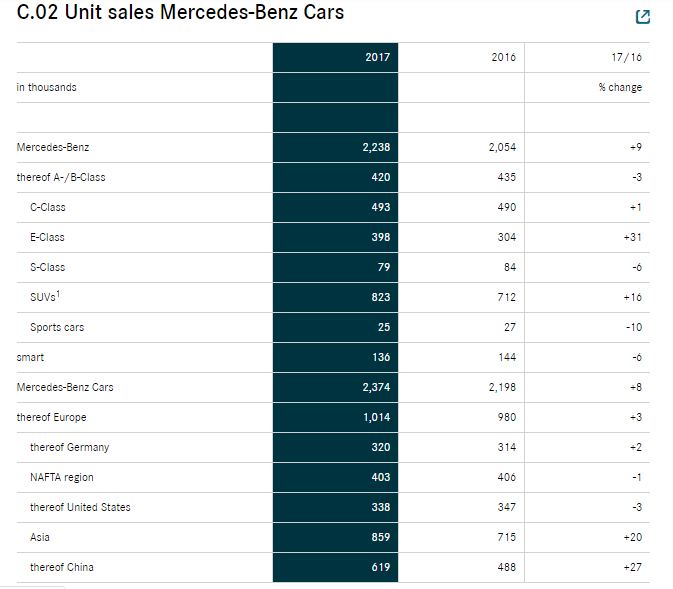
1.1. Product Offering
The products of the E class Mercedes Benz cars have always revolved around the pioneering stellar technology with high quality and safety assured to the customers. Mercedes Benz boasts about its E class product offering under 5 sections i.e. Performance, Design, Safety, Luxury, and Technology. Their performance is driven by high speed transmission and turbo-boosted engines along with adaptive air suspension systems. The designs offered exemplifies elegance and provides a full line of sedans, wagons, cabriolets, and coupes. With semi-autonomous technology adopted in most of the designs such as Attention Assist, these cars provide a high level of safety for the passengers. Ergonomics and user-friendliness driven comfort and luxury are very well represented by E class sumptuous interiors and wide space seating arrangement along with air spring suspension system. With services like car-to-X communication and Drive Pilot Option, E class has been the technology driver rather than technology follower.
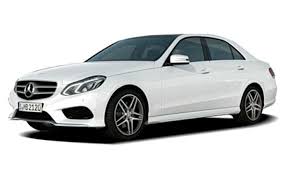
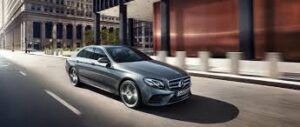
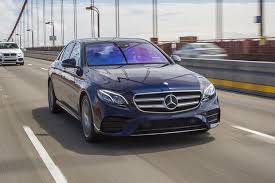
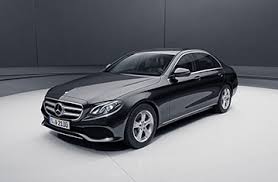
1.2. Strategies relating to Product
Mercedes Benz has introduced a range of E Class cars with different features for different requirements. The product development strategy depends upon the market requirement and the current trends going in the industry. A single specified product won’t be able to cater to the demands of different markets globally, which is why the parts have been grouped in 3 different categories. Some of them are designed uniformly across the globe under the globalization strategy, while some parts are required to have local essence under the localization strategy, and some part being the hybrid of global and local designs under the glocalization strategy. Features are put into the product depending upon the region sold. Hilly terrains would need to have a snow-friendly tyre while a sandy area would require a different tyre. For example, E Class product being sold in Australia needs to have different features than the one being sold in Africa. Mercedes cars need special terrain driving capabilities for Australian roads, where sands are present in the sides. In African cities like Cape Town, there are a lot of pot holes and the streets are narrower, so Mercedes focuses on providing better suspension system there and the length is comparatively kept smaller for the similar models.
1.2.1. Globalisation
From product design point of view, Mercedes Benz has maintained uniformity for some parts of its E class cars throughout the globe. These include both interior and exterior parts. Exterior parts such as Mercedes Benz logo on the front and the wheels, side mirrors, and front headlamps remain globally uniform for a model, whereas Interior parts such as 12.3-inch display screen, speedometer, and steering wheel with multi-touch controls and emblem remain uniform. Only those parts, which is used for aesthetics or similar functional purpose, can be kept globally uniform.
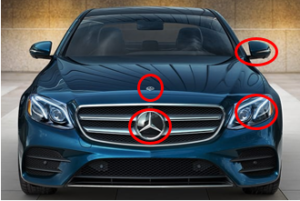
1.2.2. Localisation
E Class cars are sold everywhere, and it is very important to provide some specifications and design it for customers based on the native country and language. Music systems and the multi-screen display system are provided in the national language of the country where the car is being sold. China has been a proper example of successful localization strategy. For example, the long-wheelbase version of the new E-Class, with an extra 140 millimetres in length, has been purposefully developed in China according to the market demand.
Moreover, some of the countries have left hand driving rule while others have right hand driving rule. Correspondingly, E class cars are also produced and exported according to the rule followed in the exported country. For example, Mercedes cars in India, Australia, UK, and Africa follow left hand drive as per their government rules; whereas US, Brazilian, and Spanish models of Mercedes Benz E class have right hand drive.
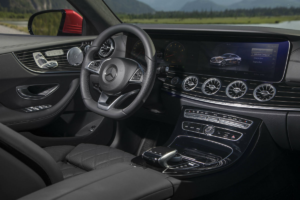
1.2.3. Glocalization



1.3. Strategies related to Promotion
Mercedes has always been active in promoting and advertising their products in attractive and innovate ways. The promotional strategy for Mercedes E Class varies according to the conveyance in their target market. The company has used several promotional videos on YouTube highlighting emotional perspectives such as displaying pride, satisfaction, excitement of customers while driving these cars. Rationally, their value proposition revolves around luxury, premium quality and features, and high technology. They use both traditional and digital modes of advertisements and spend a larger portion of the revenue on advertising, as compared to their competitors.
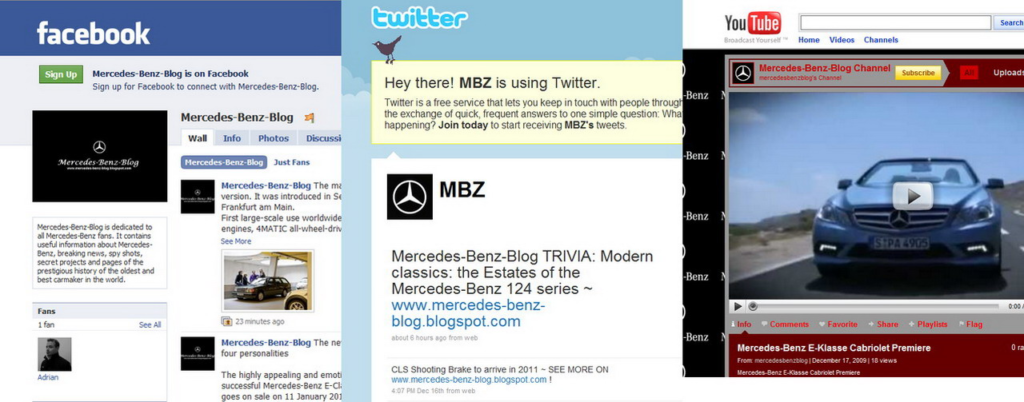
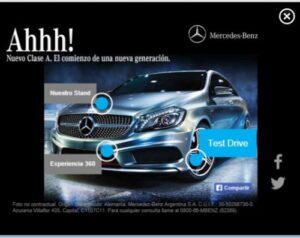
Language and Digital Advertisements have played a very important role in the success story of Mercedes Benz. The advertisements of E Class have been promoted in national languages as the design of a masterpiece with a sophisticated, confident, stylish, and sporty look. The marketing and promotional strategy for Mercedes Benz E class was earlier used to be centred around safety, luxury, and involved precision engineering. But now due to changing customer attitudes and behaviour, it has shifted towards life style-oriented messaging for the customers. The company has showed strong innovative strength in partnering with new sales channels for promotion. For example, when E200 was launched in 2016, Mercedes partnered with Amazon to have a particular web page with an interactive web special “The mind behind”. This product page was available at Amazon websites in Germany, France, Great Britain, and Japan.
Mercedes also organizes various customer centric activities for brand promotion like the Mercedes Trophy, which is an international amateur golf tournament. It also organizes various drives such as Luxe drive, International driving platform, etc., where motor enthusiasts are challenged to drive Mercedes cars in difficult locations.
1.3.1. Globalisation

The global strategy for promotion of Mercedes E Class revolves around the International advertisement campaigns and famous brand endorsers. The recent global tagline for the E Class Sedan is “Masterpiece of Intelligence”. In past also, the company has launched international advertising campaigns. For example, when BLUETEC emission treatment system was introduced in E300, an international advertisement campaign was launched on the theme of sustainability and it consisted of print media (magazines), TV commercials and digital media as the communication channel. This Grow-up campaign was globally promoted by Mercedes for urban subculture. Common advertisements are used for displaying in the similar language speaking nations. For example, the same ads of E class are displayed in US and UK, but the product features vary a bit. A recent example of globalization failure happened in South Africa when local people got offended by the global ad of Mercedes on the Mother’s Day, in which the company has featured a white female in different settings playing the role of a mother.
1.3.2. Localisation
As part of the local promotional strategy for Mercedes Benz, the biggest implementation has been the use of the native language for promotion. For example, the TV commercial ad in China would be in Chinese language, while Russian language would be used for ads in Russia. Spanish government has a legislation on the language setting to be in Spanish to facilitate their national language, which is why the promotional advertisement for E class Mercedes Benz is done in Spanish (See picture below on the right side). Similar strategy is used for other mediums of advertising and communication such as print media, social media, etc. The picture here is a Russian advertisement for an E Class Mercedes Benz car.

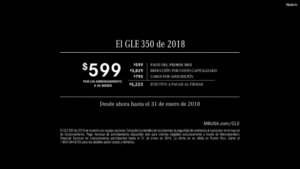
1.3.3. Glocalization
Mercedes has promoted several advertising campaigns with local but yet globally famous people as brand endorsers for particular models. This allows customers to relate themselves to the local celebrity, along with the highlighted comfort and luxury, which inspires them towards their ambition. The brand emblem is kept the same across all advertisements to give a brand recognition to the product. There have also been some failure cases of glocalization in promotion. Mercedes Benz entered in the Chinese market under the name “Bensi” which means “rush to die” in China, and it was certainly not the right way to promote own self as a fast car.

2.0. E Class Primary Target Market
With around 130 years of legacy and tradition, Mercedes Benz has been long seen as a prestigious and reputed brand. Over the decades, their target market has been upper middle class and upper-class people with age 30+. This is why, Mercedes was earlier more related to mature aged customers with traditional thinking and luxury-oriented purpose. But, after the global financial crisis, E class has been promoted recently to attract younger audiences with primary target group ranging between 25 to 45. For appealing younger generation without losing the prestige of the brand, E Class has been advertised and promoted as younger, sportier, dynamic, and elegant in look.
The primary target market for Mercedes Benz E Class has been aspiring young age people (Late twenties to early thirties mainly) with high income range and aiming for status recognition and meeting the self-esteem. Most of their ads include a male artist, in his late 20s and wearing black suit.
2.1. Market Segmentation
E Class Mercedes Benz has been one of the highest revenue generating models in the premium automobile segment. Different customers have different reasons for purchasing E Class cars. It becomes very important for the company to segment the market properly and effectively reach their target market. Four types of segmentation perspectives (Demographic, Behavioural, Geographic, and Psychographic) have been discussed and analysed below for E Class.
2.1.1. Demographic Segmentation
This segmentation is done based on the demographic factors such as age, gender, and income. E Class has segmented the market in the age group 25-39 and 40+, where the former age group perceives the brand as aspiring, elegant, and dynamic; while the latter group tends to prefer comfort and luxury. 40+ responds to wealthier income bracket, whereas 25-39 age group responds to mid to high income range. In 2010, Mercedes Benz created an online community named “Generation Benz”, which consisted of approximately 200 to 250 people between the age of 20 and 39. The reason behind forming this community was to understand & analyse buyer habits and preferences in this demographic and target younger audience.
2.1.2. Benefit Segmentation
This segmentation is done by grouping consumers based on common similarities in terms of expected product benefits or product usage pattern. For E Class, this market segment consists of people who enjoy driving well accomplishment cars and people who love to feel the “Ultimate driving experience” while traveling in cars. They perceive the products’ benefit in terms of elegance and stylishness of the car, peace, and smoothness with which it moves. For some consumers, long life expectancy of car can be seen as expected benefit while for some, powerful performance and high-quality features would seem to be the expected benefit.
2.1.3. Geographic segmentation
This segmentation is done on the basis of geographic areas such as countries, states, continents, etc. For affluent and developed countries such as Great Britain, USA, Germany, Mercedes Benz markets its products as high-end luxury cars with the main focus on comfort and quality. For developing countries such as China and India, the product is seen more as a reflection of social status icon rather than a comfort providing product.
2.1.4. Psychographic/Lifestyle Segmentation
This segmentation is done on the basis of certain consumer personalities, activities, and interests. Some of the buyers of E Class cars are highly successful business people who enjoy high quality and luxury from their cars, while some are family people who want to have high sense of worth reflected from the purpose car is fulfilling, such as going on family vacations, using for reaching office, etc. This market segment consists of those people who knows how to enjoy their life and are basically educated, rich, high-end, open minded and sportive. They want to highlight their lavishing lifestyle and be perceived by others based on the product class. Their car purchasing behaviour is more emotional rather than rational.
3.0. References
James De Villiers, 2018 May 18, Mercedes-Benz SA apologises for ad that only featured a white mother, Business Insider SA
Ryan Gerardi, 2018 Jan 05, Lost In Translation – Why Language Matters In Auto Marketing, Auto Conversion Magazine
Antonio Foglio, 2006 Aug 14, Scenario of Glocal marketing as an answer to the market globalization and localisation, CiteSeerX
Amirsan Roberto, 2018 Apr 08, Cultural epic fails: brands gone wrong, and what brands can learn from KFC, Mercedes Benz and Pepsi (In China), Medium US
Stephen Zoeller, 2019 Jan 04, How to Use Marketing Segmentation: A Mercedes-Benz Success Story, Marketing Blog
Mahsa Familmaleki, 2015 Apr 17, Analysing the Influence of Sales Promotion on Customer Purchasing Behaviour, International Journal of Economics & Modern Sciences
Hormazd Sorabjee, 2018 Mar 13, Mercedes-Benz E-class long term review final report, AUTOCAR
Dale Buss, 2016 Sep 29, Mercedes-Benz Growth Strategy Helps Luxury Automaker Regain Global Lead, BrandChannel
Conor Pope, 2018 Dec 12, 5: Mercedes-Benz E-Class – The king of its class, The Irish Times
Artur Demirci and Ina Schultz, 2016 Mar 21, The new E-Class. A masterpiece of intelligence: Mercedes-Benz starts 360° campaign to mark launch of the new E-Class, Daimler Media
Taboola, 2013 Aug 27, Daimler’s Mercedes-Benz to outline strategic plan for China, CNBC
Eric Tingwall, 2016 Mar 22, 2017 Mercedes Benz E-class, Car and Driver
Murat Ali Dulupcu, 2005 Jan 27, Globalization and Internationalization, European Commission
Ritika Sharma, 2011 Sep 13, Mercedes India Competitive Strategies, Scribd
Eric Joel Nhodza, 2015 Sep 24, Mercedes-BENZ – An analysis of the marketing Strategy adopted by Mercedes Benz in America, University of Salford
James Benson, 2018 Nov 13, Lewis Hamilton: Mercedes boss reveals all on Brazilian GP team radio chat fans didn’t hear, Express UK
Mercedes Benz website, 2018 Jan 05, Mercedes-Benz Features To Help You Get Through The Winter Season, Mercedes Benz of Huntington
Orlando Trott, 2016 Aug 28, Behavioral & Psychographic Segmentation: How To Develop Buyer Personas, Medium US
Looking for best Management Assignment Help. Whatsapp us at +16469488918 or chat with our chat representative showing on lower right corner or order from here. You can also take help from our Live Assignment helper for any exam or live assignment related assistance.
